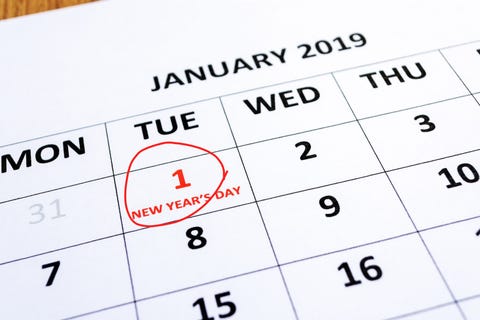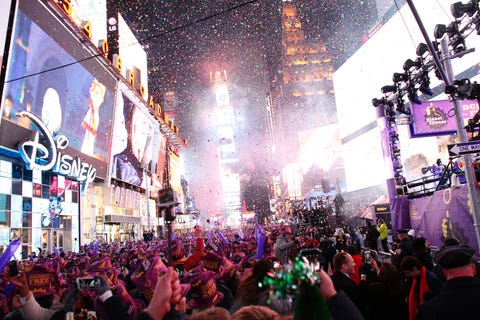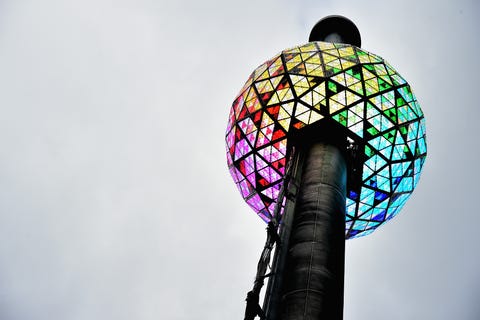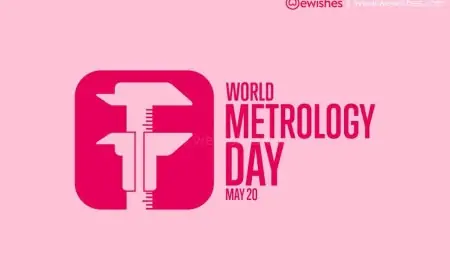Champagne toasts, countdown parties, the iconic ball drop at Times Square — New Year's Eve is famously known for its rowdy, fun-filled festivities honoring the start of the new calendar, and is one of the most celebrated holidays around the world. But did you know that the start of the new year wasn't always celebrated on January 1, or that it was first commemorated with a festival lasting a total of 11 days?
Despite the countless New Year's Eve parties you've attended and the million resolutions you've made (but maybe not kept) every year, there are probably a lot of New Year's history facts you don't know — particularly when it comes to how the holiday's most famous traditions first started. So before you ring in 2020 with a glass of bubbly, take a look back at the fascinating history behind the holiday — and be sure to check out our best ideas for New Year's 2020 afterwards.
When did New Year's Day become a holiday?
According to History.com, the earliest recorded celebration to honor the new year is believed to date back some 4,000 years — in 2,000 B.C. — to ancient Babylon. For these Mesopotamians, the beginning of the new year was heralded by the first new moon after the vernal equinox — which took place around late March — and was celebrated with a huge 11-day festival called Akitu, which involved a different ritual on each of its days. The holiday celebrated the mythical victory of the sky god Marduk over the sea goddess Tiamat, and also involved the act of either crowning a new king or allowing the old king to continue his rule. Either way, this 11-day festival would probably have put our current New Year's Eve parties to shame!

Nora Carol PhotographyGetty Images
Why do we celebrate New Year's in January?
Though the date of New Year's Day is obvious to us now, the holiday wasn't always celebrated in January. Throughout time, different cultures and civilizations typically welcomed the new year during a significant astronomical or agricultural event — like the Romans who celebrated in March, following their lunar cycle — until 46 B.C., when the emperor Julius Caesar introduced the Julian calendar. Honoring the month's namesake Janus — the Roman god of beginnings whose two faces allowed him to look simultaneously into the past and the future — Caesar instituted January 1 as the first day of the year. On this newly-dated holiday, the Romans celebrated not only by offering sacrifices to Janus, but also by exchanging gifts, attending parties, and decorating their homes with laurel branches.

KENA BETANCURGetty Images
How is New Year's celebrated around the world?
Today, the new year is celebrated in different ways all around the world — but in many countries, the holiday starts on the evening of December 31 and continues well into the early hours of January 1. Typical New Year's traditions range from enjoying foods thought to bestow good luck to making resolutions for the coming year — a practice that's actually thought to have originated from the ancient Babylonians! And what about that age-old tradition of kissing your loved one at the stroke of midnight? According to an article by The Washington Post, this particular practice is thought to have been passed down from English and German folklore, which held that the first person you encountered in the new year would determine the year's destiny — with the custom changing over time to actually choosing who you wanted the year's good luck to be shared with.
Many other countries have traditions that might be lesser well-known — for instance, in Colombia, people run around the house (or block) with a suitcase to ensure that the upcoming year is filled with travel, and the Danes jump off of chairs at the stroke of midnight to literally "leap" into a luck-filled new year. Other customs within New Year's history involve eating 12 grapes at or before midnight in Spain, or singing the Scottish song "Auld Lang Syne" as the clock strikes twelve. Wherever you choose to celebrate, though, fireworks and confetti are usually involved!

Theo WargoGetty Images
Why do we drop the ball on New Year's Eve?
We all know the iconic New Year's tradition of the ball-drop in New York City's Time Square as the clock strikes midnight on New Year's Eve — but how exactly did this fascinating tradition in New Year's history come about? According to the official Times Square Ball website, the ball drop has been a tradition since 1907, with the first New Year's Eve Ball having been a 700-pound sphere made out of iron, wood, and 100 light bulbs. Seven different versions have been designed since then, with the ball having eventually evolved into the newest (and coolest) version that it is today: a brightly patterned orb covered with LED lamps and Waterford Crystal panels that weighs in at nearly 12,000 pounds.




















